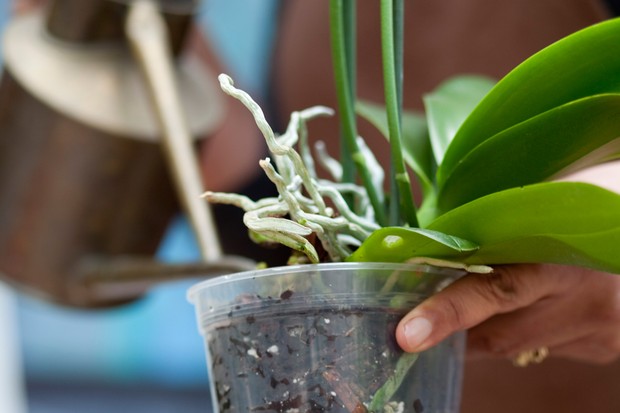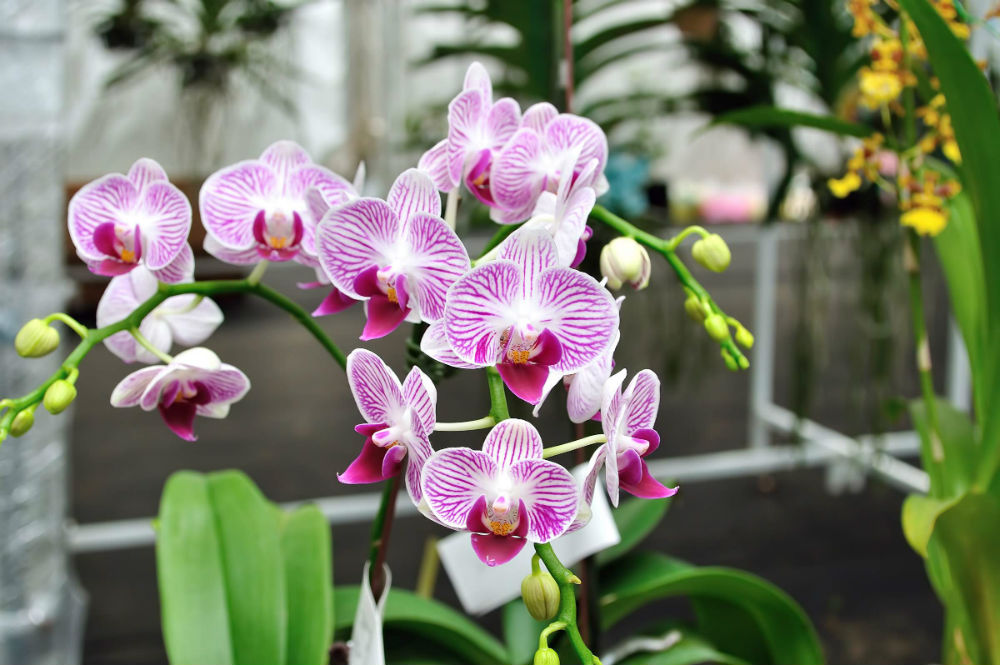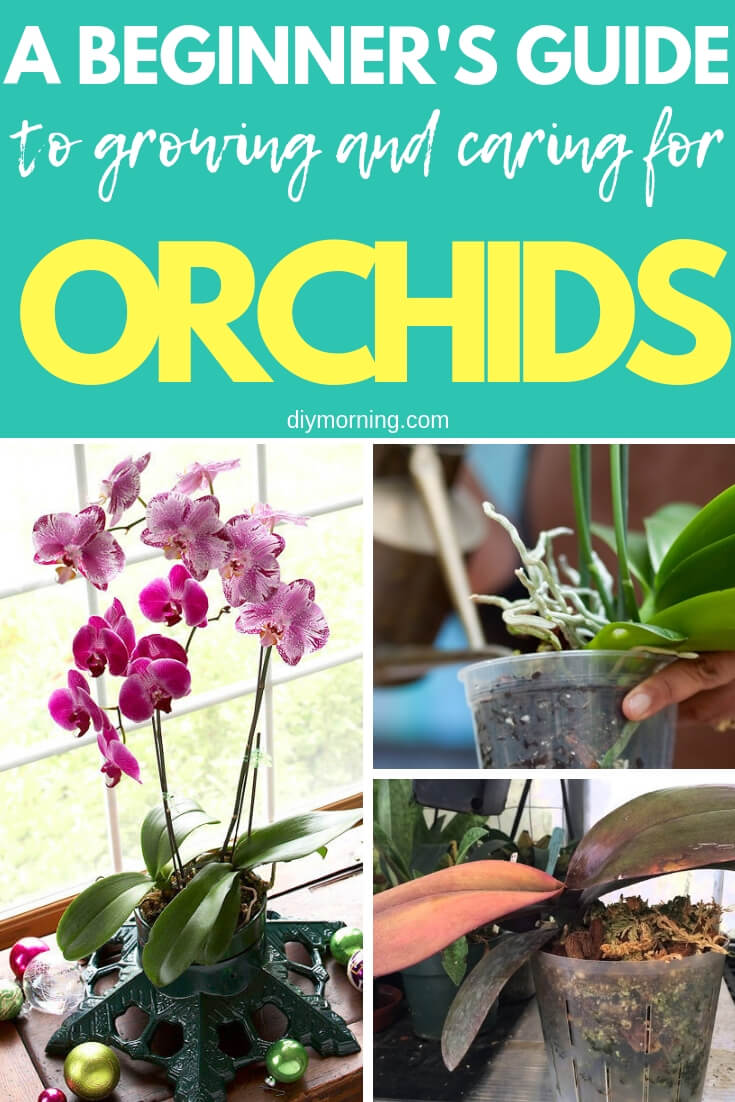Orchids are infamous for being difficult to grow and maintain. These beautiful flowers stand out because of their large, vibrant colors, and long-lasting blooms they symbolize love, fertility, and grace.
These majestic flowers are perfect to give as gifts to loved ones or grow in your garden. We’ve provided you with an Orchid Care Guide for Beginners to help you in your endeavors. Let’s begin.
Table of Contents
Items Needed to Ensure Easy Orchid Care
These items are vital in helping you care for your orchids; these are available in hardware stores or you may already have some of these at home.

- Plant Mister – To keep orchids healthy and increase humidity.
- Humidistat – Helps regulate the humidity of the air in the room, helping you check for moisture.
- Thermometer – To check for the room’s temperature, to see if it’s at the right temperature for your orchid’s preferred temperature range.
- Specific Orchid Fertilizer – Use a fertilizer that’s specific to your orchid’s needs. The FEED ME! Orchid Fertilizer is considered the gold standard amongst all orchid fertilizers.
- Humidity Tray – Provide humidity for plants.
- Orchid Bactericide/Fungicide – To keep unwanted pests away from your orchid.
Evaluate the Orchids First

To begin your orchid care journey first, evaluate the orchids.
- We encourage to start with a mature orchid so you can the gist of how to maintain it,
- buy from an experienced and knowledgeable vendor so you can get answers for your orchid related questions.
- Check the plant for pests, frailty, or disease. Common signs for unhealthy orchids are white webbing or limp leaves.
- Pick an orchid that’s easy to take care of, you can ask your local vendors for suggestions
- and finally, consider a species that can grow and live long in your location’s conditions.
The Basics for Growing Orchids

Contrary to popular belief, growing orchids is a simple task. You just need to imitate its natural habitat, and it will thrive. The most common orchid that’s readily available in stores is the Moth Orchid (Phalaenopsis) ; this species is what most people grow in their homes. Regardless of the type of orchid you want to grow or maintain, the essentials below are vital for any orchid.
The Lighting/Light
The lighting each orchid need vary,
- ranging from high lighting (30,000-50,000lux) but it’s advised to avoid direct sunlight,
- medium lighting (20,000lux),
- and low lighting (10,000lux).
But most orchids need low lighting that’s common in shaded windows and east-facing windows.
Check on your orchids to see if they’re getting the appropriate lighting they need, their leaves will become greener if the lighting is too low and become yellow if the lighting is too much. However, if patches form on your orchids, move them to an area with lower light or reduce the lighting.
The Temperature
Like lighting, different orchids have different temperature preferences for them to thrive,
- from a warm temperature 70°F to 84°F (21°C-29°C) that the common moth orchids prefer,
- an intermediate temperature or day temperature 64°F to 73°F (18°C-23°C),
- and a cool temperature that’s commonly below 70°F (21°C).
Commonly available orchids such as the moth orchid are recommended for beginners since they can thrive in temperatures that are comfortable for people.
The Humidity
Like for most house plants, orchids prefer humid environments too. Their preferred humidity is 70% which is more humid than most homes, you can use a humidistat to check for the humidity levels in your location.
- You can provide humidity to your orchids by the use of a plant mister or set them up on a humidity tray, put water at the bottom of the tray and add sufficient gravel or pebbles that the orchid set on top of it isn’t submerged in water.
These are easy ways to provide humidity to orchids for beginners.
The Fertilizer
Provide your orchids with nutrition once a month with the use of a balanced and water-soluble fertilizer. For better results, you can use a specific orchid fertilizer that’s made for their species. However, once your orchid blooming stops the use of fertilizer should be reduced and you can resume when you see new growth.
Watering
Underwatering is less fatal than overwatering because this can cause the orchid’s death.
- You can stick a finger a couple of inches into the potting mix and if it’s dry water it by then, do not water until it’s dry.
- When watering your orchid, take it to a sink and run water through its pot till it flows out of the bottom, you can also submerge its pot in water for a few seconds and drain off excess water.
Pruning
Trimming old flower stems is always a good idea. If the stem is still green, it still has a chance to grow or re-bloom ; do not trim them. Generally, pruning orchids is only essential if dead leaves, roots, and flower stems are present. Sterilize the material used for trimming the orchids to avoid spreading orchid disease.
Repotting
It’s ideal to repot your orchids every couple of years. You can use a potting mix that’s specially formulated for orchids for longer-lasting use of the pot’s mix and avoid a frequent change of potting soil.
Conclusion
Taking care of any plant is easy if you put your effort and time on taking care of it, you’re rewarded with beautiful healthy orchids that adorn your garden or homes. We hope this guide helped you in your orchid caring endeavors.





